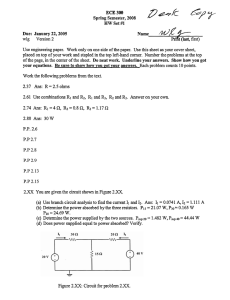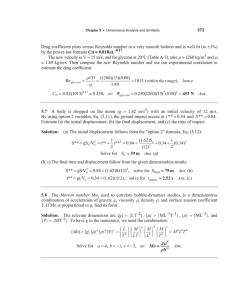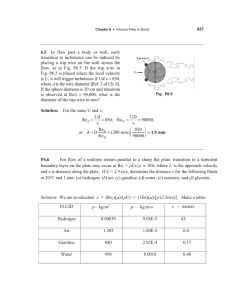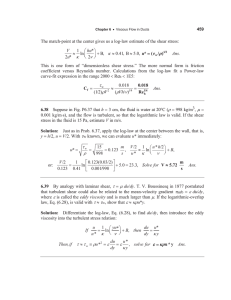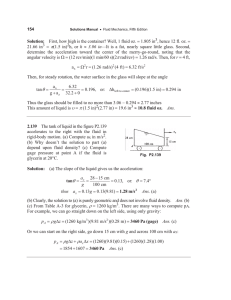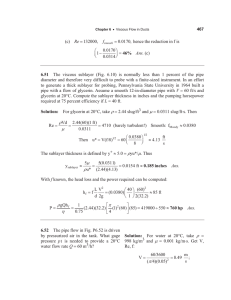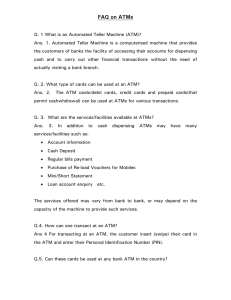For water at 20°C, we could just look it up... estimate B from the state relation (1-22). Thus, for a...
advertisement
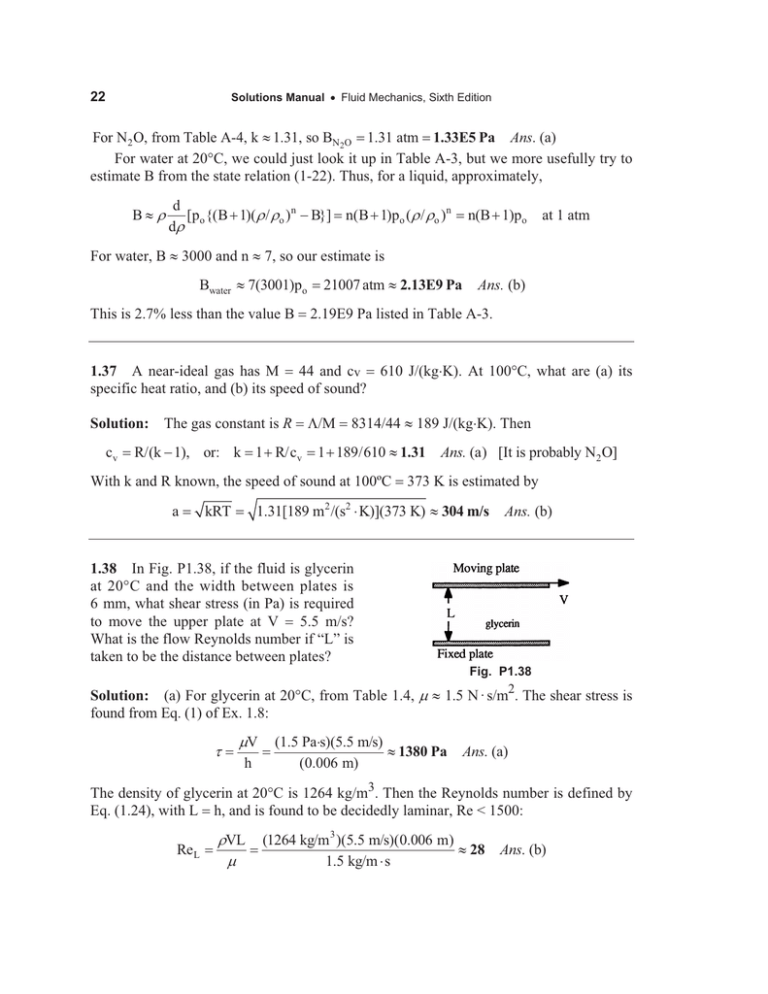
22
Solutions Manual x Fluid Mechanics, Sixth Edition
For N2 O, from Table A-4, k | 1.31, so BN2O 1.31 atm 1.33E5 Pa Ans. (a)
For water at 20°C, we could just look it up in Table A-3, but we more usefully try to
estimate B from the state relation (1-22). Thus, for a liquid, approximately,
B| U
d
[po {(B 1)(U / Uo )n B}] n(B 1)po (U / Uo )n
dU
n(B 1)po
at 1 atm
For water, B | 3000 and n | 7, so our estimate is
Bwater | 7(3001)po
This is 2.7% less than the value B
21007 atm | 2.13E9 Pa
Ans. (b)
2.19E9 Pa listed in Table A-3.
1.37 A near-ideal gas has M 44 and cv 610 J/(kgK). At 100°C, what are (a) its
specific heat ratio, and (b) its speed of sound?
Solution: The gas constant is R
cv
R/(k 1), or: k 1 R/cv
/0 | 189 J/(kgK). Then
1 189/610 | 1.31 Ans. (a) [It is probably N2 O]
With k and R known, the speed of sound at 100ºC
a
373 K is estimated by
1.31[189 m2 /(s2 K)](373 K) | 304 m/s
kRT
1.38 In Fig. P1.38, if the fluid is glycerin
at 20°C and the width between plates is
6 mm, what shear stress (in Pa) is required
to move the upper plate at V 5.5 m/s?
What is the flow Reynolds number if “L” is
taken to be the distance between plates?
Ans. (b)
Fig. P1.38
2
Solution: (a) For glycerin at 20°C, from Table 1.4, P | 1.5 N · s/m . The shear stress is
found from Eq. (1) of Ex. 1.8:
W
PV
h
(1.5 Pas)(5.5 m/s)
| 1380 Pa
(0.006 m)
Ans. (a)
The density of glycerin at 20°C is 1264 kg/m3. Then the Reynolds number is defined by
Eq. (1.24), with L h, and is found to be decidedly laminar, Re < 1500:
Re L
UVL
P
(1264 kg/m 3 )(5.5 m/s)(0.006 m)
| 28 Ans. (b)
1.5 kg/m s

